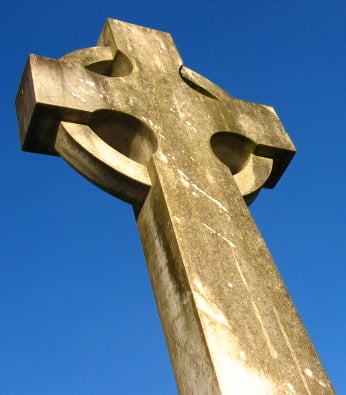 Feast of the Exaltation of the Holy Cross
Feast of the Exaltation of the Holy Cross
Scripture: Lectionary 638: Feast of Holy Cross. Sept.14th. Numbers 21:4-9. Psalm 78:1-2,34-35.36-37.38. Phil. 2:6-11. John 3:13-17:
Christology and Soteriology blend today in this liturgical feast. That means that Jesus is the center of our texts and that the saving dimension of his life affects all who believe in him. The readings progress in an ascending manner to highlight the symbolism of the brazen serpent being lifted up and then Jesus death on the Cross seen as his being lifted up to the heavenly realm of the Father. By keeping in mind both the Incarnation and the Redemption we will be at the heart of today’s Scriptures.
John’s Gospel is highly symbolic and theological. It is not a historical presentation of the Jesus but rather a spiritual contemplative writing. John easily moves from symbolism in the Hebrew Scriptures to a realizing of them in the person of Christ. His Bible is the Hebrew Scriptures just as the “Bible” for Jesus was the Hebrew Scriptures or the Tanach (Torah, Prophets, and Writings).
We are let in on a dialogue that Jesus is having with Nicodemus who has come to him at night. Jesus has spoken of being born from above or again a few paragraphs before our selection. Being born from above would be the better translation for the meaning of “being lifted up.”
John is faithful to the tradition of Jesus making his crucifixion known three times in the other Gospels where it plainly foretold. Here the symbolic “lifting up” will have two more texts helping us to see the threefold prediction of his death. Those texts are 8:28 and 12:32. All of the texts about being lifted up are found in the first section of John’s Gospel which is often designated the Book of Signs (chapters 1-12). In this part of the Gospel the gift of faith and the decision to embrace that faith conscientiously is the main theological thread in these chapters. One must believe in the very Person of Jesus who is being lifted up on the Cross.
This is not a Gospel of the Cross as Mark’s but one in which the death of Jesus is focused on the rising and lifting up of the glorified one on the Cross to the glory of God. It is a victory over the stings of the fiery serpents (the Prince of darkness, the Devil and his cohorts). This is sometimes seen in Jesus being vested and a priest and king while hanging or being lifted on the Cross. Liturgical art often captures what we do not see when listening literally to what is being read.
We read in Numbers that those who trusted in Moses’ words about looking upon the brazen serpent on a pole were healed. All the moreso when the Son of God is nailed to the Cross and we look upon him trusting and believing in what he has told us, we are healed, we are saved by the precious blood of Jesus.
All three readings about being lifted up are Christological, that is, they center on who Jesus is and what he does. The Incarnation leads to the Redemption in the carrying out of the Father’s will. The plan of God working within salvation history is taking place in Jesus.
Jesus has led us to the moment of supreme giving, the moment of ultimate enduring love that is symbolized by the water and the blood. The Incarnation has come to blend into the Redemption both by the revelatory words of the Fourth Gospel but also by the symbols become real at the foot of the Cross. Creation has led to Incarnatation and this leads to Redemption. The Cross embraces all of God’s plan that makes of us a new creation born from above.
Thus the Word who became flesh of Mary is now the Lamb of God sacrificed for us. We are led to make a decision of faith in order to enter into the mystery of the Crucified Jesus. Then we experience the gift of love that is so prevalent in the second part of John’s Gospel (chapters 13-21).
“We adore you, O Christ, and we bless you, for you have redeemed us by your death on the Cross.” Amen.
Copyright 2012 Fr. Bertrand Buby, S.M.
About the Author

Guest
We welcome guest contributors who graciously volunteer their writing for our readers. Please support our guest writers by visiting their sites, purchasing their work, and leaving comments to thank them for sharing their gifts here on CatholicMom.com. To inquire about serving as a guest contributor, contact editor@CatholicMom.com.


.png?width=1806&height=731&name=CatholicMom_hcfm_logo1_pos_871c_2728c%20(002).png)
Comments